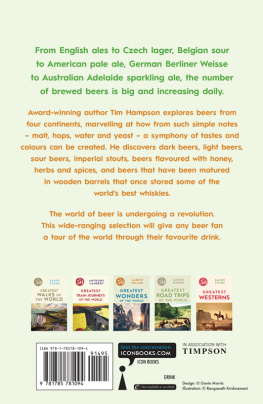Dave Law - The Home Brew Handbook: 75 recipes for the aspiring backyard brewer
Here you can read online Dave Law - The Home Brew Handbook: 75 recipes for the aspiring backyard brewer full text of the book (entire story) in english for free. Download pdf and epub, get meaning, cover and reviews about this ebook. year: 2014, publisher: Ryland Peters & Small, genre: Home and family. Description of the work, (preface) as well as reviews are available. Best literature library LitArk.com created for fans of good reading and offers a wide selection of genres:
Romance novel
Science fiction
Adventure
Detective
Science
History
Home and family
Prose
Art
Politics
Computer
Non-fiction
Religion
Business
Children
Humor
Choose a favorite category and find really read worthwhile books. Enjoy immersion in the world of imagination, feel the emotions of the characters or learn something new for yourself, make an fascinating discovery.
- Book:The Home Brew Handbook: 75 recipes for the aspiring backyard brewer
- Author:
- Publisher:Ryland Peters & Small
- Genre:
- Year:2014
- Rating:3 / 5
- Favourites:Add to favourites
- Your mark:
The Home Brew Handbook: 75 recipes for the aspiring backyard brewer: summary, description and annotation
We offer to read an annotation, description, summary or preface (depends on what the author of the book "The Home Brew Handbook: 75 recipes for the aspiring backyard brewer" wrote himself). If you haven't found the necessary information about the book — write in the comments, we will try to find it.
Rise-up against the watery, wimpish beers you generally find on store shelves and produce your own beers packed with big, bold flavors. Following the explosion of interest in properly brewed beer, The Homebrew Handbook is here to provide the knowledge to allow beer enthusiasts to make their own. Packed full of 75 recipes for everything from stouts and porters to IPAs, wheat beers and pilsners, you will learn how easy it is to brew your own beers bursting with taste. So whether you like a hoppy, crisp finish, or a biscuity, malty taste, you are certain to find the right beer for you. A comprehensive techniques section provides all the key information needed to get started, explaining the key ingredients and how they work together, plus the equipment youll need and how to set it up in your own home. Soon you will understand the intricacies of full-mash brewing and be well on your way to making beers you can be proud of. And the aim is to encourage you to experiment, not reproduce beers you have enjoyed in the past, but to master the basic types of beer, then go on to produce your own. Its how some of the best microbreweries started, so why not follow their lead? Also included is advice from people who have started their own breweries, where they share a few secrets that will help you along the way.
Dave Law has been at the forefront of the fight against tasteless, mass-produced beer; refusing to bow down to the bland and insisting on only serving beers produced by the finest microbreweries at his two London pubs. His passion for a well-made beer knows no bounds and shows in his own exquisite brews.
A firm advocate of the self-sufficient lifestyle, Beshlie Grimes has been making beers, wines and other country drinks on her farm for family and friends for as long as she can remember.
Dave Law: author's other books
Who wrote The Home Brew Handbook: 75 recipes for the aspiring backyard brewer? Find out the surname, the name of the author of the book and a list of all author's works by series.


















